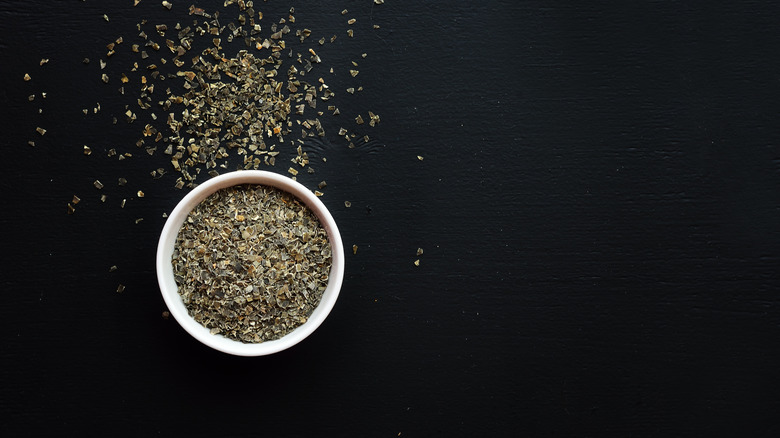Numerous recipes have their own go-to stock sorts. For instance, American recipe fixing in chicken stock is a standard placed on record. Japanese food comprises dashi, a filling supply of its own as the setting for certain dishes, for instance, miso soup, plunging sauce, and nimono (steamed dishes). There are various kinds of dashi stock, every one of which has its own spec culinary use, yet they add to their capacity to contribute umami (the fifth flavor) to a dish.
Essentially, dashi stock is a gathering of stock comprising of blend umami-rich palatable assortments, for instance, bonito fish pieces, dried kombu (sea kelp), dried shiitake mushrooms, and dried entire sardines. It is the underpinning of Japanese cooking and the fluid base in miso soup, nabe (hot pot dish), and udon and ramen noodle dishes.
Preparing for dashi is for the most part a lovely wellspring of both torment and joy as it requires some speculation. The material ought to be dried to any condition typically or reconstituted from a possibly dry state to get the most advantage. Nevertheless, the discussion is simple, and it gets no more troublesome than making your own chicken stock. In particular, it shapes the base layer of flavor from which the completed dishes will benefit.
Gather more knowledge here at https://ofstype.com/
Assemblage
There are a couple of notable kinds of dashi. You are not set in stone by the flavor you want to add to the dish, the sort of dish, and the various trimmings that are involved.
Kombu dashi is made utilizing dried kelp, has the most subtle flavor, and is the least complex to make. It is utilized for clear soups and nabe (hot pot dishes), as well as different dishes, and is the most ideal decision for veggie darlings and vegans as it is created utilizing dried kelp.
Katsuo dashi is delivered utilizing katsuobushi (dried bonito drops) and utilized for soups, ramen, and so on. It functions admirably with basically any Japanese dish.
The most well-known type utilized in Japanese cooking is Ave Dashi. Uniting kombu and katsuobushi (awaze meaning combination), it is utilized to explain soups, nimono, and noodle soups to say the very least.
Gather more knowledge about types of hair extensions
Reiko dashi is created utilizing dried anchovies or sardines (called niboshi), and has a sensitive obnoxious flavor in many dishes, including miso soup, noodle soup dishes, rice bowls, nimono, and nikuzaga (cheeseburgers). (albeit the smell is strong). stew). ) brings. ,
Hoshi-shitake dashi is utilized commonly to make nimono and different dishes and is an amazing choice for veggie darlings. Here and his shiitakes are related to dashi kombu.
How To Cook With Dashi?
Notwithstanding soups, stews, and noodle dishes, you can utilize dashi the same way you would utilize any stock. It is at times blended in with flour for dishes, for instance, okonomiyaki, a delightful Japanese hotcake.
Generally, the flavor profile of a dish will direct what sort of dashi is in your recipe. The degree of obsession might shift imperceptibly relying upon the tendency.
How Can It Taste?
An extensive variety of dashi gives a rich, choice flavor to dashi stock due to the glutamic corrosives typically happening in the expected dry trimmings. Each has a subtle taste contrast.
Dashi Recipe
It might require additional work to make dashi ahead, as the trimmings might be warmed with the end result of bubbling and spill them out a short time later, in any case, a respectable one gives your Japanese dishes a similar sum or better flavor. At the point when there could be no other choice, you can likely utilize a vegetable or fish stock, yet fussbudgets will concur that is definitely not a reasonable swap for dashi.
Where To Purchase Dashi?
You can generally purchase the elements for dashi at an enormous grocery store, an Asian grocery store, or on the web. Kombu comes in sheets, and bonito drops are frequently accessible.
To make dashi, heat a 2-inch piece of kombu in 2 cups of water, and enthusiastically eliminate the compartment as an air pocket structure. (You won’t allow the mix to rise considering the way that kombu can radiate a serious flavor and make a slick surface.) Eliminate the kombu from the stock and discard it, or reuse it in another bunch Get it done. For added flavor and to improve it, sprinkle a piece of kombu in water prior to warming it – this permits you to reuse the kombu by adding it to anything you’re cooking.
If making dashi without any planning is a more powerful icing, there are two choices that are fundamental: dashi packages and dashi powder. The groups have a more obvious flavor than the powder since they are delivered utilizing the genuine trimmings used to make that particular dashi.
The heap of dashi has similar dry trimmings as the pack of tea. Put the package into the water, let it air pocket, and when the group type has arrived at the stock, dispose of the group. you on the web or in significant Japanese supermarkets powder is similarly a quick technique for making dashi stock. Around 1 teaspoon of the powder is normally used for 2 1/2 to 3 cups of water. Follow group headings for precise degrees, as this could change by brand. As a last resort, taste preceding adding more powder.
Expecting Powder and Bundle Sounds Like Cheating, it is About best used on the day it’s made. If you have some extra dashi, regardless, keep it in a disguised holder refrigerated for to a week or take advantage of purpose in 90 days or less.







